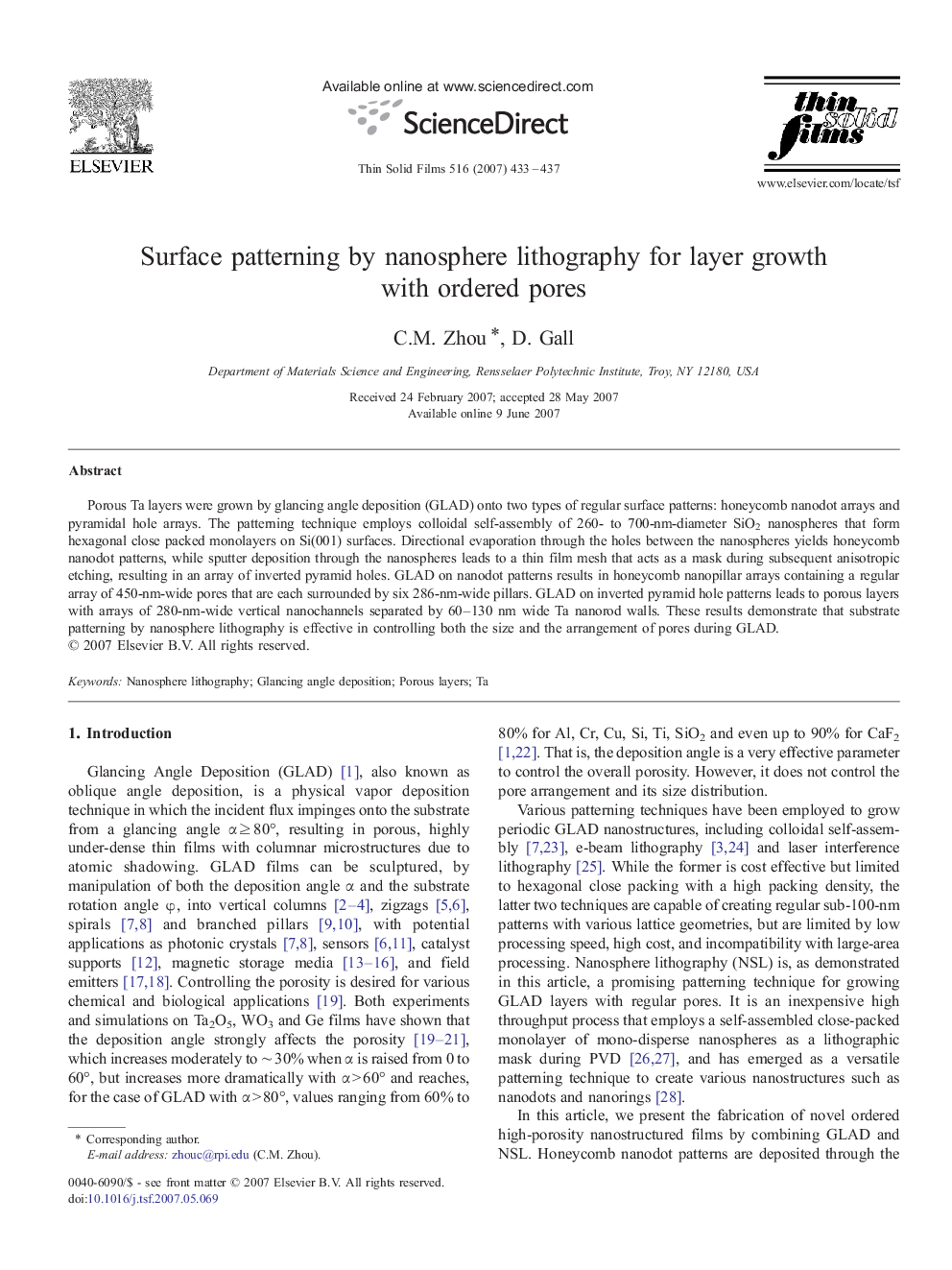| Article ID | Journal | Published Year | Pages | File Type |
|---|---|---|---|---|
| 1673627 | Thin Solid Films | 2007 | 5 Pages |
Porous Ta layers were grown by glancing angle deposition (GLAD) onto two types of regular surface patterns: honeycomb nanodot arrays and pyramidal hole arrays. The patterning technique employs colloidal self-assembly of 260- to 700-nm-diameter SiO2 nanospheres that form hexagonal close packed monolayers on Si(001) surfaces. Directional evaporation through the holes between the nanospheres yields honeycomb nanodot patterns, while sputter deposition through the nanospheres leads to a thin film mesh that acts as a mask during subsequent anisotropic etching, resulting in an array of inverted pyramid holes. GLAD on nanodot patterns results in honeycomb nanopillar arrays containing a regular array of 450-nm-wide pores that are each surrounded by six 286-nm-wide pillars. GLAD on inverted pyramid hole patterns leads to porous layers with arrays of 280-nm-wide vertical nanochannels separated by 60–130 nm wide Ta nanorod walls. These results demonstrate that substrate patterning by nanosphere lithography is effective in controlling both the size and the arrangement of pores during GLAD.
